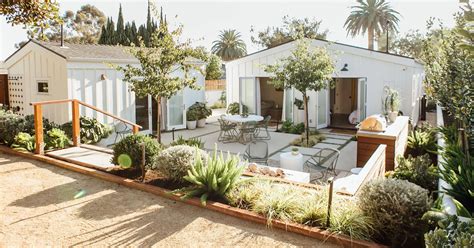
Many homeowners who moved into older properties are sharing their experiences on home upgrades they consider worthwhile investments, highlighting projects ranging from crucial structural repairs to modern amenities that greatly improve living comfort and property value. These homeowners emphasize that strategic spending, especially on foundational aspects, can significantly enhance the quality and longevity of their homes.
Moving into an older home often means inheriting a mix of charm and potential problems. Many homeowners find themselves grappling with decisions about where to allocate their renovation budgets effectively. According to recent discussions among homeowners who have already undertaken such projects, certain upgrades consistently emerge as invaluable, offering substantial returns in terms of comfort, functionality, and property value. These upgrades typically address essential structural issues, improve energy efficiency, or introduce modern conveniences without compromising the home’s original character.
One of the most frequently cited upgrades is addressing foundational issues. Homeowners report that investing in the structural integrity of their homes is paramount, regardless of the initial cost. “We had to redo all the plumbing,” shares one homeowner, noting the extensive work done to replace outdated and corroded pipes. Such projects, while often unseen, are crucial for preventing future disasters like burst pipes or water damage, which can lead to extensive and expensive repairs. Another homeowner emphasized the importance of roof repairs, stating, “A new roof gave us peace of mind during storm season.” These foundational investments, though costly upfront, protect the entire home and preserve its long-term value.
Another popular category of upgrades involves enhancing energy efficiency. Many older homes suffer from poor insulation, outdated windows, and inefficient heating and cooling systems, leading to high energy bills and uncomfortable living conditions. Upgrading insulation is a particularly cost-effective improvement. By properly insulating attics, walls, and floors, homeowners can significantly reduce heat loss in the winter and heat gain in the summer. One homeowner noted, “Our energy bills dropped by 40% after we insulated our attic.” Similarly, replacing old, drafty windows with energy-efficient models can make a noticeable difference. Double- or triple-paned windows with low-E coatings help to minimize heat transfer and reduce noise pollution. Upgrading HVAC systems is also a common recommendation. Switching to a modern, high-efficiency furnace or air conditioner can lower energy consumption and improve indoor air quality. Some homeowners opt for smart thermostats that automatically adjust temperature settings based on occupancy and preferences, further optimizing energy usage.
Modernizing kitchens and bathrooms consistently ranks high on homeowners’ lists of worthwhile upgrades. These spaces are often the focal points of daily life, and renovations can dramatically improve functionality and aesthetics. In kitchens, popular upgrades include replacing outdated cabinets and countertops, installing new appliances, and improving the layout to optimize workflow. One homeowner recounts, “We completely gutted our kitchen and created an open-concept design that’s perfect for entertaining.” Modern appliances, such as energy-efficient refrigerators, dishwashers, and ovens, not only enhance convenience but also reduce energy consumption. In bathrooms, upgrades may include replacing old fixtures with low-flow toilets and showerheads, installing new vanities and countertops, and adding features like heated floors or walk-in showers. These renovations can transform bathrooms into spa-like retreats, enhancing relaxation and comfort.
Beyond these essential upgrades, many homeowners choose to invest in cosmetic improvements that enhance the overall appeal of their homes. These projects may include painting interior and exterior surfaces, refinishing hardwood floors, and updating lighting fixtures. Fresh paint can instantly brighten up a room and give it a more modern feel. Refinishing hardwood floors can restore their original luster and add warmth to the home. Upgrading lighting fixtures can improve illumination and create a more inviting atmosphere. Smart lighting systems, which allow homeowners to control lights remotely and automate lighting schedules, are becoming increasingly popular.
Another area of focus for homeowners is improving outdoor spaces. Landscaping, adding a deck or patio, and installing outdoor lighting can enhance curb appeal and create functional outdoor living areas. Well-maintained landscaping can significantly boost a home’s value and create a welcoming first impression. Adding a deck or patio provides space for outdoor dining, entertaining, and relaxation. Outdoor lighting can extend the usability of outdoor spaces into the evening hours. Some homeowners also invest in features like outdoor kitchens, fire pits, and water features to create luxurious outdoor living environments.
The trend of investing in home upgrades reflects a broader shift towards prioritizing comfort, convenience, and long-term value. Homeowners are increasingly viewing their homes as investments and are willing to spend money on improvements that will enhance their quality of life and increase their property values. This trend is particularly pronounced among millennials and Gen Z, who are more likely to embrace modern technologies and design aesthetics.
The financial aspect of these renovations is a critical consideration. Homeowners often finance their upgrades through a combination of savings, home equity loans, and government-sponsored programs. Home equity loans allow homeowners to borrow against the equity they have built up in their homes, providing a source of funds for renovations. Government-sponsored programs, such as energy-efficiency rebates and tax credits, can help to offset the cost of certain upgrades. Careful budgeting and planning are essential for ensuring that renovations are completed on time and within budget.
One critical consideration in renovating older homes is preserving their historical character. Many homeowners are drawn to older homes because of their unique architectural details and historical significance. When undertaking renovations, it is important to strike a balance between modernizing the home and preserving its original charm. This may involve restoring original features, such as wood trim and moldings, or using materials and finishes that are in keeping with the home’s architectural style.
Navigating the complexities of home renovations can be challenging, especially for first-time homeowners. Many homeowners find it helpful to consult with professionals, such as architects, contractors, and interior designers, to ensure that their projects are well-planned and executed. Choosing the right professionals is essential for ensuring that the renovations are completed to a high standard and within budget. It is also important to obtain the necessary permits and approvals from local authorities before starting any major renovations.
Moreover, the emotional aspect of renovating a home should not be overlooked. Renovations can be stressful and disruptive, especially when living in the home during the process. It is important to have realistic expectations and to be prepared for unexpected challenges. Maintaining open communication with contractors and family members can help to minimize stress and ensure that the renovations proceed smoothly.
The experience of renovating an older home is often a journey of discovery. Homeowners may uncover hidden treasures, such as original hardwood floors or architectural details, that add to the home’s character. They may also encounter unexpected problems, such as structural issues or outdated wiring, that require creative solutions. Despite the challenges, many homeowners find the process of transforming an older home into a modern, comfortable living space to be incredibly rewarding. The satisfaction of preserving a piece of history while creating a home that meets their needs is a powerful motivator.
The decision to invest in home upgrades is a personal one, based on individual needs, preferences, and budgets. However, the experiences shared by homeowners who have already undertaken such projects provide valuable insights into which upgrades are most likely to deliver a positive return on investment. By focusing on essential structural repairs, energy efficiency improvements, and strategic modernizations, homeowners can enhance the value and enjoyment of their homes for years to come.
Ultimately, the goal of home renovations is to create a space that reflects the homeowner’s personality and lifestyle. Whether it’s a cozy bungalow or a grand Victorian, a well-renovated home can be a source of pride and a place where memories are made. The stories of homeowners who have successfully transformed their older homes into modern, comfortable living spaces serve as an inspiration to others who are considering embarking on similar projects.
Expanding on specific renovation examples from homeowners:
-
Structural Reinforcement: One homeowner detailed an extensive project to reinforce the foundation of their century-old home. The original foundation, made of crumbling stone, was causing significant settling and cracking in the walls. The homeowner invested in a new concrete foundation, which involved lifting the house and rebuilding the base. While costly, this upgrade ensured the structural integrity of the home for decades to come. They also addressed termite damage, which is a common issue in older wooden structures. Termite treatment and wood replacement prevented further deterioration and maintained the home’s overall stability.
-
Energy-Efficient Windows and Doors: Another homeowner focused on replacing drafty, single-pane windows with energy-efficient, double-pane windows. They also replaced an old, leaky front door with an insulated steel door. These upgrades significantly reduced drafts and improved the home’s overall energy efficiency. The new windows also reduced noise pollution, creating a quieter and more comfortable indoor environment. The homeowner noted a substantial decrease in their heating and cooling bills after making these improvements.
-
Kitchen Remodel with Modern Amenities: A homeowner described a complete kitchen remodel that transformed a cramped, outdated space into a modern, functional kitchen. They removed a wall to create an open-concept design, installed new cabinets and countertops, and replaced old appliances with energy-efficient models. They also added a kitchen island with a built-in cooktop and seating, providing additional workspace and a gathering spot for family and friends. The new kitchen became the heart of the home, enhancing both its functionality and its aesthetic appeal.
-
Bathroom Renovation with Accessibility Features: Another homeowner renovated their bathroom to make it more accessible for family members with mobility issues. They installed a walk-in shower with grab bars, a comfort-height toilet, and a wider doorway to accommodate a wheelchair. These upgrades made the bathroom safer and more comfortable for all family members, regardless of their physical abilities. They also updated the bathroom’s aesthetics with new tiles, fixtures, and lighting.
-
Smart Home Integration: A tech-savvy homeowner integrated smart home technology throughout their older home. They installed a smart thermostat, smart lighting, smart locks, and a smart security system. These devices allowed them to control their home’s temperature, lighting, and security remotely, improving convenience and energy efficiency. They also installed a voice-activated assistant, which allowed them to control various devices with voice commands.
Cost Considerations and ROI:
It is essential to carefully evaluate the costs and potential return on investment (ROI) of different home upgrades. Some upgrades, such as structural repairs and energy efficiency improvements, may have a higher upfront cost but can provide significant long-term savings and increase property value. Other upgrades, such as cosmetic improvements, may have a lower upfront cost but may not provide as much ROI.
Homeowners should also consider their personal preferences and priorities when deciding which upgrades to pursue. If they plan to live in the home for many years, they may be more willing to invest in upgrades that will enhance their comfort and enjoyment of the space. If they plan to sell the home in the near future, they may focus on upgrades that will appeal to potential buyers and increase the home’s market value.
The Importance of Professional Guidance:
Navigating the complexities of home renovations can be challenging, especially for first-time homeowners. Consulting with experienced professionals, such as architects, contractors, and interior designers, can help homeowners make informed decisions and avoid costly mistakes. These professionals can provide valuable guidance on design, materials, and construction techniques. They can also help homeowners obtain the necessary permits and approvals from local authorities.
Choosing the right professionals is crucial for ensuring that the renovations are completed to a high standard and within budget. Homeowners should research different professionals, read online reviews, and interview several candidates before making a decision. They should also ask for references and check the professionals’ licenses and insurance.
The Emotional Rewards of Home Renovation:
While home renovations can be stressful and disruptive, they can also be incredibly rewarding. The process of transforming an older home into a modern, comfortable living space can be a source of pride and satisfaction. Homeowners often develop a deeper connection to their homes after undertaking renovations, appreciating the unique character and history of the space.
The emotional rewards of home renovation extend beyond the individual homeowner. Renovating an older home can also contribute to the revitalization of a neighborhood and the preservation of its architectural heritage. By investing in their homes, homeowners can help to create vibrant and sustainable communities.
Ultimately, the decision to invest in home upgrades is a personal one, based on individual needs, preferences, and budgets. However, the experiences shared by homeowners who have already undertaken such projects provide valuable insights into which upgrades are most likely to deliver a positive return on investment and enhance the quality of life.
Frequently Asked Questions (FAQ):
Q1: What are the most common upgrades homeowners undertake when moving into older homes?
A: Homeowners commonly address foundational issues like plumbing and roofing. Energy efficiency improvements, such as insulation and window replacements, are also popular. Kitchen and bathroom modernizations, along with cosmetic enhancements like painting and flooring, are frequently undertaken to improve both functionality and aesthetics.
Q2: How can homeowners finance these upgrades, especially the more expensive ones?
A: Funding options include savings, home equity loans, and government-sponsored programs like energy-efficiency rebates and tax credits. Home equity loans allow borrowing against the home’s equity, while government programs can offset costs for specific upgrades. Careful budgeting and planning are crucial for managing expenses effectively.
Q3: How do homeowners balance modernizing older homes while preserving their historical character?
A: Striking a balance involves restoring original features, such as wood trim and moldings, and using materials and finishes that align with the home’s architectural style. Consulting with professionals like architects and historical preservation experts can help ensure renovations respect the home’s heritage.
Q4: What are some of the unexpected challenges homeowners face during renovations of older homes?
A: Unexpected challenges include uncovering structural issues, outdated wiring, or hidden damage like mold or asbestos. These discoveries can require creative solutions and additional expenses. Maintaining open communication with contractors and having a contingency fund can help manage these surprises.
Q5: What is the overall return on investment (ROI) for common home upgrades in older properties?
A: ROI varies depending on the specific upgrade. Structural repairs and energy efficiency improvements often yield significant long-term savings and increase property value. Kitchen and bathroom renovations can also provide a strong ROI by enhancing functionality and appeal. Cosmetic improvements offer a more immediate visual impact but may not have as high a financial return.









